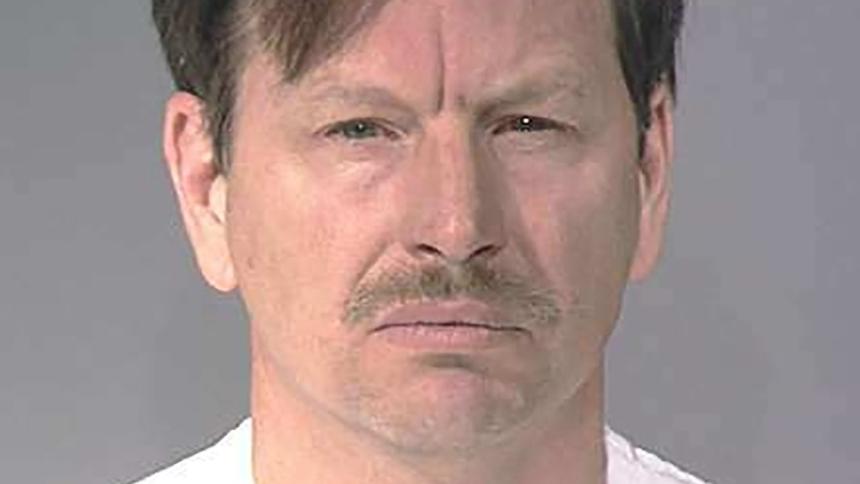
Evil uncuffed: When police unknowingly release serial killers
Serial killer cases can last for years. Decades, even. Some infamous multiple murderers are never even found. Gathering up the evidence, profiling the killer, tracking them down, making a case against them… these things are rarely as easy as they make them seem on TV.
So when the police finally hear the clicks of the handcuffs after gathering enough evidence to charge their killer, it’s cause for serious celebration. Very occasionally, however, it’s a cause for serious embarrassment too. Only sometimes, just sometimes, the serial killer and those ‘cuffs aren’t strangers.
There are a few different reasons why police may arrest and then release a serial killer. We’ll find out more than a few of them in just a second...
Here are five examples of when some of modern history’s most brutal and notorious murderers were caught, only to be unwittingly released almost immediately back into the community to continue their killing spree:
Jeffrey Dahmer
‘Dahmer’ is a name, like ‘Bundy’ or ‘Gein’, that is now synonymous with the idea of the monstrous American serial killer. Savage, cunning and deranged, it’s tempting to think that these figures completely evaded police detection for decades. But it’s rarely the case. They’re often known persons of interest.
Between the years 1978 and 1991, 17 young men would die at the hands of the man known as The Milwaukee Monster. Yet the killer, Jeffrey Dahmer, was not unknown to Wisconsin Police.
On the night of May 27th 1991, the police were called to a neighbourhood where a frightened, confused, drugged and naked young teenager was found wandering the streets. Interviews of witnesses soon led them to Dahmer, who coolly explained that the 14-year-old boy was, in fact, 19 and his boyfriend who was just a little drunk.
Buying the yarn completely, police even escorted the child back to Dahmer’s apartment, in which lay the bloated, stinking and decomposing body of a previous victim. You have to imagine the cops had a pretty lousy sense of smell.
Dahmer would go on to viciously kill the boy, a Lao kid called Konerak Sinthasomphone. As well as several other young men before finally being caught, tried and imprisoned. He would be killed by a fellow inmate in 1994.
Peter Sutcliffe
Somewhat incredibly, 'The Yorkshire Ripper' Peter Sutcliffe was interviewed NINE TIMES by West Yorkshire Police during their five-year-long investigation into his killings.
For several years, Sutcliffe was one of the investigation team’s prime suspects. Hence the staggering number of times they hauled him in. However, an all-or-nothing approach to new information (anonymous ‘confession’ tapes which would soon prove to be hoaxes), meant the focus was shifted and the Bingley-born killer was free to kill again and again.
John Christie
John ‘Reg’ Christie killed at least seven women and a baby at his Notting Hill home between 1943 and 1953. 10 Rillington Place would be a legendarily evil address which provided the title of a film made about Christie, a 1971 picture starring Sir Richard Attenborough. A three-part BBC drama with a similar title would go on to be made in 2016 starring Tim Roth.
Christie had already killed two women when he lured neighbour Beryl Evans into his house under false pretences, murdering her and her 13 month-old daughter Geraldine. Chillingly, ‘Reg’ then framed Beryl’s very own husband Timothy Evans for the crime. Successfully. Evans would hang for the crime in March of 1950.
During the interrogation of Timothy Evans, the accused put Christie in the frame for the murders. Met Police were not prepared to fully investigate Christie, however. One cursory chat with the former War Reserve Police officer down at the station and he was released despite him having a police record and having spent time in prison. Christie was allowed to go on to kill at least another four times.
Gary Ridgway
Had DNA profiling been what it is today back when ‘The Green River Killer’ was stalking the streets of Seattle and Tacoma back in the 1980s and ‘90s, far fewer women would have been killed.
The man responsible, Gary Ridgway, was a prime suspect for the King County Sheriff's Office's Green River Task Force. Yet without rock-solid evidence, they couldn’t charge him in connection with any of the eventual 49 murders he would later be convicted of (his actual victim tally is thought by some to total nearer 100). Not until DNA proof was found in 2001.
He was first considered a suspect way back in 1983. He even took - and passed - a police polygraph test a year later, being unflappable in all interviews.
Henry Lee Lucas
Depending on what you believe, the infamous American serial killer Henry Lee Lucas was either one of the most prolific murderers of all time or a fantasist. The truth is probably somewhere in between.
Lucas claimed, at various points, to have killed hundreds of people. Only three were ever confirmed. He also claimed to kill at the behest of a shady cult called The Hand of God, something which has never been confirmed or completely dismissed.
However many lives the Virginia man took - and for whatever reason - what can’t be denied is that police had apprehended him during his reign of terror and let him go. Midway through his 23-year killing span, in 1971, he was found guilty of attempting to kidnap three young girls. He served just four years in jail for the crime, where he met Otis Toole, the man that would go on to become his murder accomplice in (possibly) countless homicides in the future.
In 1975, Henry Lee Lucas was released. Who knows how many people he and Toole went on to kill.
It wasn’t even the first time Lucas had gone to prison and been let out to go about his deadly deeds. In 1960 he spent just 10 years inside for second-degree matricide after battering and stabbing his mother to death. He was released due to prison overcrowding.
What can we conclude from these instances where authorities released monsters back out to prey on the general public? Well, thankfully, it’s an extraordinarily rare occurrence.
When it has happened, let’s not forget that a hunch isn’t enough to continue detaining a suspect. Investigators need evidence, which is something that wily serial killers don’t tend to leave lying around.
Over the years, police incompetence will certainly have contributed to guilty parties being released to kill again. But so too will red tape, process and procedure, the cunning of those responsible for the crimes, a lack of evidence that would hold up in court and flat-out bad luck.








